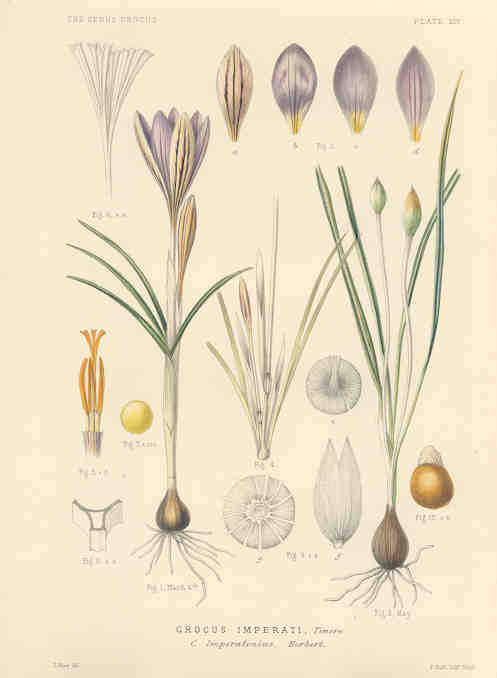| HOME | Links | More news | Gallery | Site Map | Search in Google | Search in CrocusBank | Contact us |
|
|
||||
|
3. Elaboration of a List of Descriptors (WP-03) and Characterisation of the Collection (WP-05) Due to the local and minority character of saffron crop there is no list of descriptors published by the IPGRI. For that reason, one of the basic goals of this project will be the elaboration of such a list. We will try to construct a list of descriptors valid for the genus Crocus , based on the taxonomic criteria for the genus, but also including the categories present in other IPGRI list of descriptors, amongst them:
• Morphological descriptors. Characters observable in plant and flower. • Phenological descriptors. Days of emergence, flowering and ripening. • Agronomical descriptors. Number of corms per mother corm; fresh weight of 100 flowers, production of stigmata per plant, corm size, number of flowers per corm, total number of buds, number of active buds per corm, number of stigmata per corm, stigmas length, etc. • Cytological descriptors. Chromosome number and karyotype characteristics. • Embryological descriptors. Based on the characteristics of the embrionary development (excluding C. sativus). • Chemical and Biochemical descriptors. Including the composition in secondary metabolites (carotenoids, flavonoids, etc.) and other bioactive molecules. • Molecular descriptors. Based on DNA analysis. • Descriptors of susceptibility to stress factors. Resistance to plagues, diseases and abiotic factors.
|
 |
The descriptor resulting of this project must be as complete as possible. The primary characterisation assays (morphological and agronomical traits) will be basically carried out by Partner 1 in the experimental farm of CIA-Albaladejito (Cuenca) during three consecutive years and with an identical design to the multiplication parcel ( 12 cm furrows; 20 cm between plants and 40 cm amongst furrows). A portion of the corms will be collected each year for characterisation. The size of the samples will depend on the variability observed for the characters evaluated. Corms (and/or seeds in the case of fertile crocuses) extracted from the field of characterisation, together with those of the field of conservation/multiplication, will serve as supply to the potential petitioners in this campaign. The parcel of characterisation will be laboured as that of multiplication, but both will be located on separated zones of the fence, and will serve as replicas of security for contingencies. |
|
| Implementation | |
Partners 1 , 4 , 10 and 11 compose the Descriptors Group (DG), with Partner 4 as manager, are responsible of WP-03. The characterisation and evaluation at morphological, physiological and agronomical levels (WP-05) will be carried out by the CEGA group composed by partners 0 , 1 , 4 , 7 , 10, and 11 and leaded by partner 1 . It is obvious the necessary harmonization amongst DG and CEGA. The characterisation and evaluation at chemical and molecular levels will be responsibility of the CEGC group (partners 0 , 2 , 3 , 5 , 7 , 8 , 9 , 10 , 12 and 13) under the management of partner 2. In a crop which quality is directly related to the presence of secondary metabolites (i.e. apocarotenoids and derivatives), and with non-culinary prospects for the future, a deep chemical characterisation is absolutely basic. The expected low genetic diversity of saffron crop makes molecular tools absolutely necessary for the characterisation of C. sativus accessions. |
|
| For methods in secondary characterization and evaluation see points 6 & 7 | |